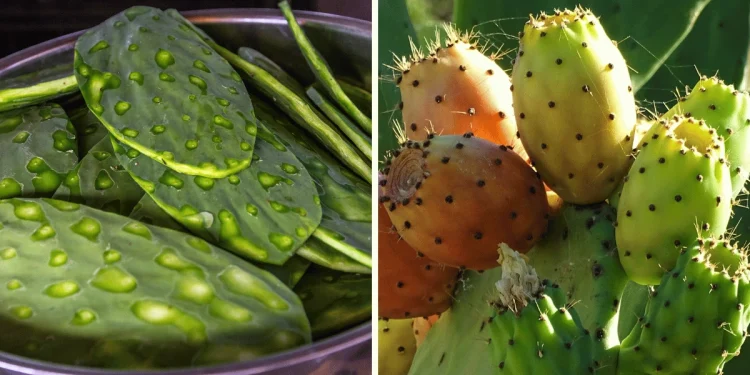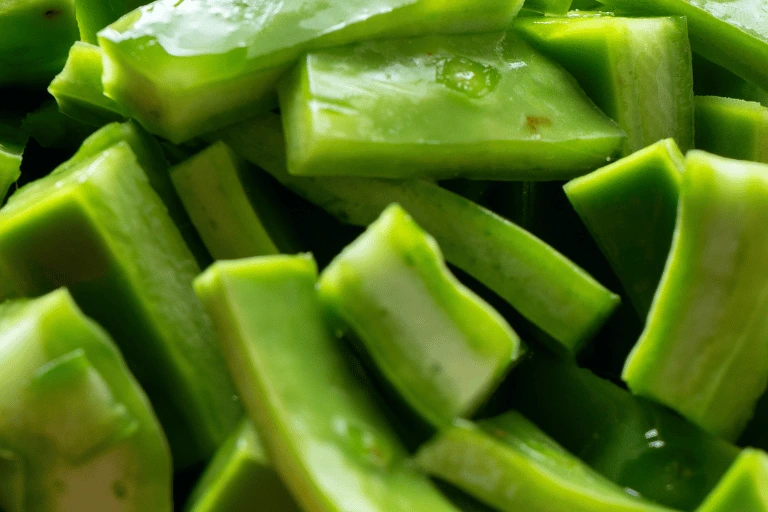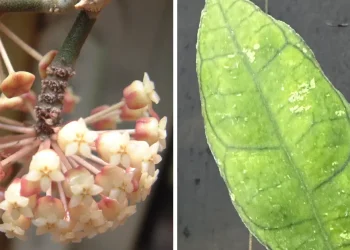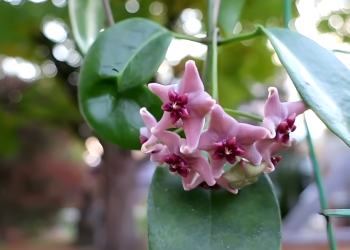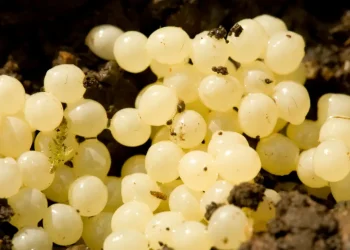You may have come across these prickly plants in the desert or as trendy home decor. And the encounter can be painful most of the time. The plant I’m talking about is, of course, a cactus.
But did you know that some species can also be eaten? Anything that comes from plants like these can be called either a vegetable or a fruit. But what is cactus? Is cactus a fruit or a vegetable?
Well, it’s a bit tricky. A few years ago, I visited a farmer’s market in a nearby city, and I was astounded to see a vendor selling cactus fruit jams, jellies, and even a cactus fruit-flavored ice cream! And right beside a second farmer was selling a similarly looking cactus but called it a vegetable served as a salad.
I was completely flummoxed! How could a cactus be a fruit and a vegetable at the same time?
It turns out that it depends on what part of the cactus the edible part comes from. One part is classified as a fruit, while the other may be categorized as a vegetable.
Now, without further ado, let’s peel back the spines and dive deep into the question of whether cactus is a fruit or vegetable and which edible types will tickle your taste buds.
Is Cactus a Fruit or Vegetable?
Well, cactus is both a fruit and a vegetable. Let me explain.
Fruits are generally described as mature fruits of flowering plants, and they are defined by their fleshy or pulpy texture and the presence of seeds. That’s also why tomatoes are categorized as a fruit,
Vegetables, on the other hand, are typically the edible parts of non-flowering plants, including the leaves, stems, roots, and even some fruits, such as squash and zucchini. Both squash and zucchini can produce vibrant yellow blossoms but are put into the vegetable category because these parts are usually not eaten.
These definitions fit cactuses perfectly.
The fleshy green pads that you may have seen in some varieties of cactus are typically characterized as a vegetable and are often used in traditional Mexican cuisine in dishes such as nopales, a Mexican cactus leaves salad.
However, the story doesn’t end there. On top of the green pads, you may find a prickly pear – a spiky, round fruit that is a common edible variety of cactus. So, depending on the type of cactus, you may be dealing with a fruit, a vegetable, or both!
What other Plants are both Fruits and Vegetables?
There are actually quite a few plants that can be classified as both fruits and vegetables.
Let’s start with misclassified plants.
That tomatoes are, in fact a fruit is already a fairly well-known point. But did you know that cucumber is also botanically considered a fruit? Both these fruits are commonly considered vegetables due to their culinary uses. Similarly, eggplants or bell peppers are technically fruits.
There are actually quite a few plants, like the cactus we discussed earlier, that produce both fruits and vegetables. For instance, a pumpkin is botanically categorized as a fruit, but the plant also produces edible leaves, which can be classified as a vegetable.
Which Cactuses are Edible
Several species of cactus are not only edible but also a delicious and nutritious addition to your diet. And the best part is that each has its unique taste and texture, so you can experiment all year long.
One of the most popular edible cactuses is the prickly pear cactus, also known as Opuntia. The fleshy pads, or nopales, of the prickly pear cactus, can be sliced and used in a variety of dishes, from salads to stir-fries. Prickly pear fruit, which grows on top of the pads, is also edible and is often used to make jams, jellies, and juices.
But if you can’t wait to enjoy this fruity-vegetable cactus, I’ve got bad news for you. Prickly pear grows incredibly slowly, it can take four years before a new plant starts fruiting.
Also, what you might not know is that dragon fruit is also a cactus. Texturally it’s a bit like kiwi but with more seeds, and it tastes like a mix between a watermelon and a pear. On paper, it sounds like a weird mixture of flavors, but I love it, and I bet that you’d too.
Other edible cactuses include the saguaro cactus, which produces a sweet, red fruit, and the barrel cactus, which has edible pulp and seeds. In fact, this particular type of cactus has the classic appearance of a cactus that you might see in a movie.
How to Eat a Cactus
The most common way to eat cactus is to use the fleshy pads or nopales.
To prepare them, start by trimming off the edges and spines of the cactus pads with a sharp knife. Next, rinse the pads under cold water to remove any remaining spines or debris. You don’t need to strip the outer layer, just make sure that all spines are gone.
From there, you can slice the nopales into strips or dice them into small pieces. They can be sautéed with garlic and onion, grilled, or even pickled for a tangy and flavorful addition to salads and tacos.
Prickly pear fruit can be eaten raw, or you can remove the skin and seeds and use the flesh in smoothies or desserts. When cooking with cactus, be sure to avoid overcooking, as this can result in a slimy texture.
Raw or Cooked?
Edible cactus can be eaten both raw or cooked.
In my experience, it’s better to cook the pads at least a bit as older the cactus gets, the pads get tougher. But try both methods and see which one you like more.
On the other hand, I have never used heat to prepare the fruits. Simply cut off the ends and peel the skin. Alternatively, you can cut the fruit in half and scoop the flesh out with a spoon.
Benefits of Eating Cactus
Cactus are not only tasty but also have several health benefits. it’s a low-calorie food that’s high in fiber, vitamins, and minerals. I have looked out for interesting studies that support some exciting benefits of the cactus. Let’s take a look at how you can use cactus to improve your health.
Cactus as a Treatment for Obesity and Diabetes
There have been several studies on the potential of cactus as a treatment for obesity and diabetes. One study published in 2012 found that cactus fiber can help regulate blood sugar levels in people with type 2 diabetes.
Eating cactus every day won’t cure diabetes completely, but it offers a great way to control blood sugar levels.
Cactus to Eliminate Hangovers
Believe it or not, cactus has also been studied as a potential remedy for hangovers. The prickly pear cactus, in particular, has been found to have anti-inflammatory and antioxidant properties that can help alleviate the symptoms of a hangover, such as nausea and headache.
One study published in Scientific American found that consuming cactus before drinking alcohol significantly reduced the severity of hangover symptoms the next day.
Cactus may also Reduce Cholesterol
A study from late 2013 found that the juice present in nopal cactus significantly higher the rate of breaking down cholesterol. It is actually able to lower cholesterol with much fewer side effects than traditional cholesterol medications.
Which Cactuses Should Definitely not be Eaten
While there are plenty of cactuses that are perfectly safe to eat and even have numerous health benefits, there are some that should definitely be avoided.
These toxic cactuses are often not directly life-threatening, at least not in minor quantities. Actually, some cultures purposefully consume these species for its psychoactive properties.
One example is the Peyote cactus which looks very different from all edible species and does not pose such a risk of being accidentally eaten. However, another toxic cactus is a San Pedro cactus, which can be easily confused with the saguaro cactus.
Identifying and avoiding the “bad” cactuses from the edible ones is not always easy. First, you should never eat something you don’t know. If you did, toxic cactuses will often have a bitter or sour taste. Also, be cautious of any cactus with milky sap, which can be a sign of toxicity.
Toxic cactuses contain alkaloids that may cause nausea, vomiting, diarrhea, and abdominal pain. The severity of symptoms can vary depending on the type and amount of the toxin ingested.
Frequently Asked Questions
Well. Cactus is both a vegetable and a fruit. The fleshy green pads that you may have seen in some varieties of cactus are typically characterized as a vegetable. And on top of the green pads, you may find a prickly pear – a spiky, round fruit that is a common edible variety of cactus.
Yes, certain varieties of cactus, like the prickly pear, can be eaten raw after removing the spines and outer skin. When it comes to eating the fleshy pads, they can also be eaten raw, but from experience, I would recommend cooking them for a few minutes.
The taste of cactus can vary depending on the variety and how it is prepared. Generally, it has a mild, slightly sweet flavor and a crunchy texture. Most popular cactus – Dragon fruit tastes like a mix between a watermelon and a pear.
Cactus can be cooked in a variety of ways, including grilling, sautéing, boiling, or baking. The prickly spines and outer skin should be removed before cooking.
Cactus can be found at many grocery stores, specialty markets, and online retailers. It may be sold whole or pre-cut into smaller pieces.
Conclusion
Cacti can make an interesting and unique addition to your diet. This applies to both cactuses as fruit and as a vegetable. They offer a range of potential health benefits, including reducing cholesterol, treating hangovers, and aiding in weight loss.
Additionally, if you are here not only for the food, cacti can also make a great addition to your home. They are very easy to maintain, and in 4 to 6 years, you’ll be able to make yourself a nice homemade cactus ice cream or salad.
You might also know that cactuses are part of the succulent family. If you ever wondered how big your succulents can get, check out my other article, which answers just that.

